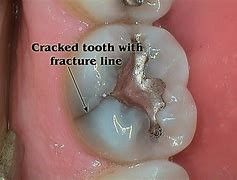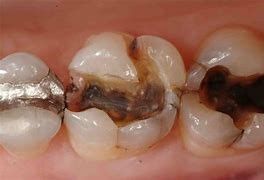Revitalize Your Smile With Precision and Perfection: Explore Our Crowns and Bridges Services at Leading Edge Dental in Leesburg, FL
Crowns are dental restorations, otherwise known as "caps," which are coverings that fit over teeth. Crowns are made of natural-looking porcelain and are made to improve your overall smile or to blend in with your teeth. Sometimes, an underlying metal shell is used under the porcelain if additional strength is needed. Crowns may be necessary because of broken down old fillings and fractured, chipped, or sensitive teeth. Crowns are also used to improve the appearance of natural teeth that are malformed, malpositioned, or discolored.
Some of the indications for a crown are:
- A previously filled tooth where there now exists more filling than tooth. The existing tooth structure becomes weakened and can no longer support the filling.
- Extensive damage by decay.
- Discolorations and compromised esthetics.
- Fractures.
- Root canal – After a root canal, teeth tend to become brittle and are more apt to fracture. These teeth need to be protected by a crown.
- Bridges – When missing teeth are replaced with a bridge, the adjacent teeth require crowns in order to support the replacement teeth.
Crowns play a crucial role in reinforcing and protecting the existing tooth structure. They not only enhance the appearance of your teeth but also serve as a protective layer. Crowns can be crafted from various materials, including all- porcelain crowns and zirconium crowns. The choice between these options depends on the conditions of the tooth strength requirements and aesthetic considerations, which you and your dentist will discuss during treatment planning.
The process of fitting a crown typically involves two appointments. During the first visit, your tooth is carefully prepared for the crown. Additionally, a digital scan is taken and sent to the lab for fabrication. To protect the prepared tooth, a temporary crown is placed over it. In the subsequent visit, the temporary crown is removed, and the final crown is meticulously fitted, adjusted, and cemented into place. This ensures both functionality and aesthetics for your tooth.
What to Expect During your Crown Procedure:
During your crown procedure you will have two separate appointments.
First Appointment:
At your first appointment the Dr. will administer local anesthetic to ensure your comfort. Depending on the anesthesia you may be numb for one to two hours after the procedure. A soft diet may be recommended until the numbness is gone to ensure you do not bite your cheek, lip, or tongue.
Once numb, D. Vaziri will prepare your tooth for the crown. The tooth will be digitally scanned with a 3D scanner for a more precise fit. A thin piece of retraction cord may be placed to capture the image of the tooth better. Then the image will be sent to the lab for fabrication. After the tooth is scanned a temporary will be made for protection until the new crown can be made.
Second Appointment:
During this appointment the temporary will be removed and the new crown will be placed and the new crown will be fitted to ensure the bite is good, and the patient approves the color, and appearance of the crown. Once everything is approved the crown will be seated with permanent cement.
For all your questions, call our team today at (352) 365-6442.
Copyrighted since 1994-2025




